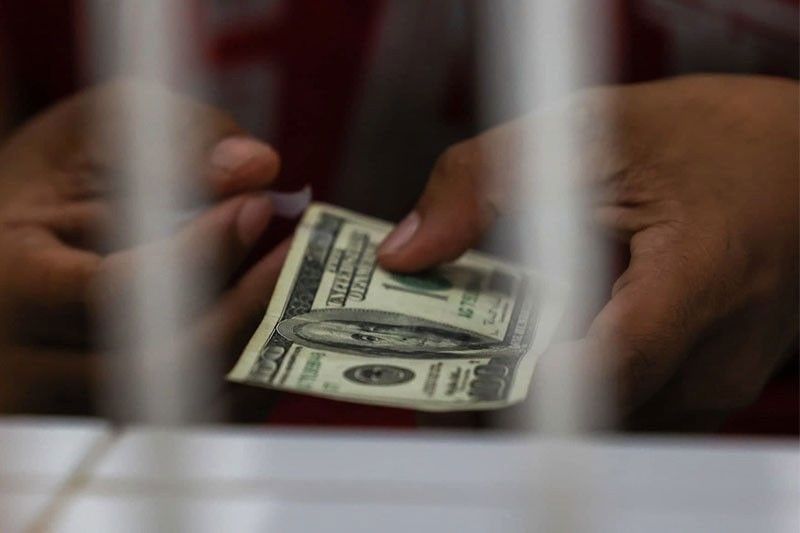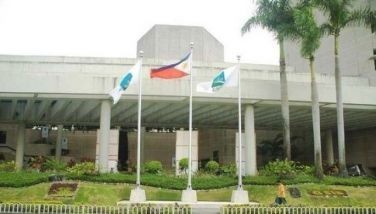Remittances rise by 3.5% to hit 3-month high in October

MANILA, Philippines — Dollars sent home by Filipinos abroad continued to rise, hitting a three-month high in October ahead of the Christmas and New Year holidays, according to the Bangko Sentral ng Pilipinas (BSP).
Data released by the central bank showed that personal remittances – the sum of net compensation of employees, personal transfers, and capital transfers between households – amounted to $3.23 billion in October this year, 3.5 percent higher than the $3.12 billion recorded in the same month last year.
This was the highest since the $3.24 billion booked in July, but the growth rate was the slowest since the 2.3 percent increase recorded also last July.
The increase was brought about by the 3.6 percent rise in remittances sent by land-based workers with work contracts of one year or more to $2.53 billion from $2.44 billion, as well as the 3.7 percent growth in remittances from sea- and land-based workers with work contracts of less than one year to $640 million from $620 million.
From January to October, personal remittances inched up by 3.1 percent to $29.72 billion from $28.81 billion in the same period last year.
Likewise, cash remittances coursed through banks grew by 3.5 percent to hit a three-month high of $2.91 billion in October from $2.81 billion in the same month last year. The increase was the slowest since the 2.3 percent recorded last July, but the value was the highest since the $2.92 billion booked also in July.
Cash remittances from land-based workers increased by 3.7 percent to $2.33 billion from $2.25 billion, while the amount sent home by sea-based workers grew by 3.5 percent to $580 million from $560 million.
During the 10-month period, cash remittances rose by 3.1 percent to $26.74 billion from $25.93 billion in the same period last year.
In terms of country source, the US topped the list with a share of 41.7 percent, followed by Singapore with seven percent, Saudi Arabia with 5.9 percent, Japan with five percent, the United Kingdom with 4.8 percent, United Arab Emirates with four percent, Canada with 3.6 percent, Qatar with 2.8 percent, Taiwan with 2.7 percent, and South Korea with 2.5 percent.
Despite the uptick, the growth recorded from January to October remains below the four percent growth target set by the BSP for this year.
However, the BSP remains confident that OFW remittances could still grow by four percent this year despite the soft increase this year.
Dennis Lapid, officer-in-charge of the Department of Economic Research, earlier said that the deployment of OFWs jumped 40 percent to about 760,000 from January to September this year amid the rising demand for Filipino workers and the reopening in host economies because of their labor supply constraints.
The labor shortages, he explained, include demand for workers in the healthcare and medical sector, as well as for workers in the recreational and leisure industry.
He noted that the Philippine government is actively pursuing bilateral labor agreements with key OFW host economies, including Germany, Canada, the United Kingdom, and Japan.
Lapid also cited the continued increase use of digital platforms for payments that allow OFWs to continue sending money to their beneficiary families in the Philippines.
In 2021, the BSP missed its six percent growth forecast as personal and cash remittances went up by only 5.1 percent. Personal remittances increased to an all-time high of $34.88 billion, while cash remittances reached a record high of $31.42 billion.
Remittances remain one of the major sources of US dollars, together with revenues from the business process outsourcing (BPO) sector, tourism receipts, and earnings of exporters that help boost the gross international reserves (GIR) that serve as a buffer against external shocks.
The local currency weakened by as much as 15.7 percent to close at an all-time low of 59 to $1 level several times in October, but has since bounced back to the 55 to $1 after a series of aggressive rate hikes by the BSP Monetary Board and its intervention in the foreign exchange market to smoothen volatility.
The Cabinet-level Development Budget Coordination Committee (DBCC) now expects the peso to range from 54 to 55 to a dollar this year and further weaken to 55 to 59 in 2023.
The local currency is seen appreciating and stabilizing within the 53 to 57 to $1 between 2024 and 2028.
- Latest
- Trending































